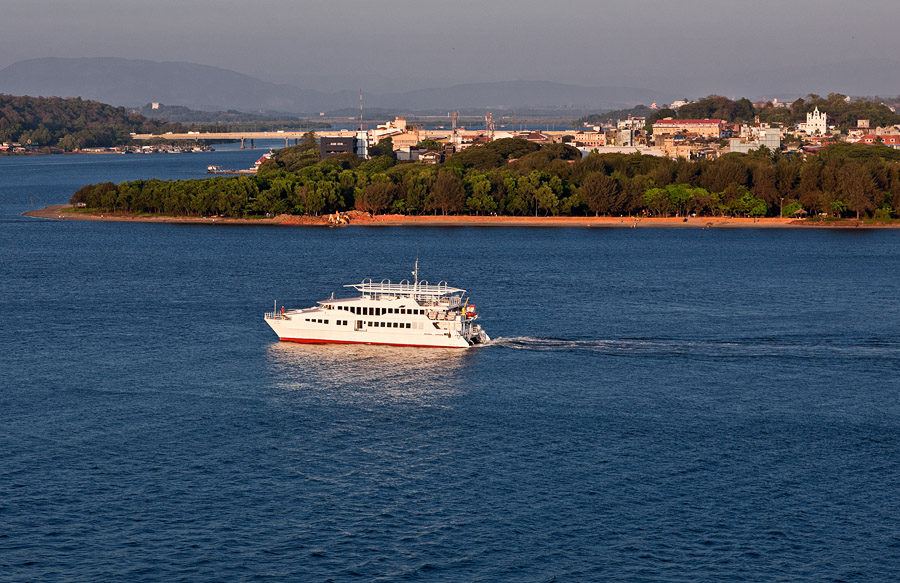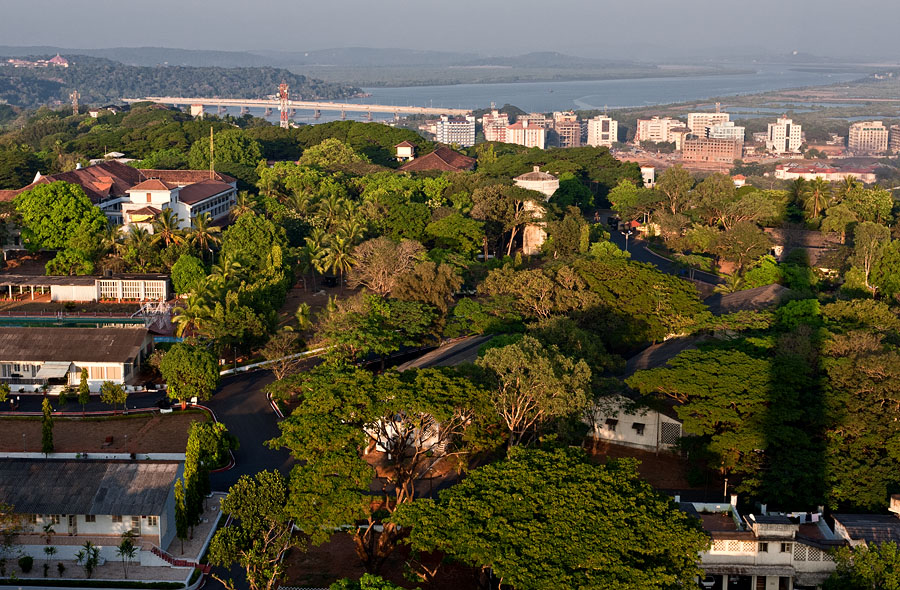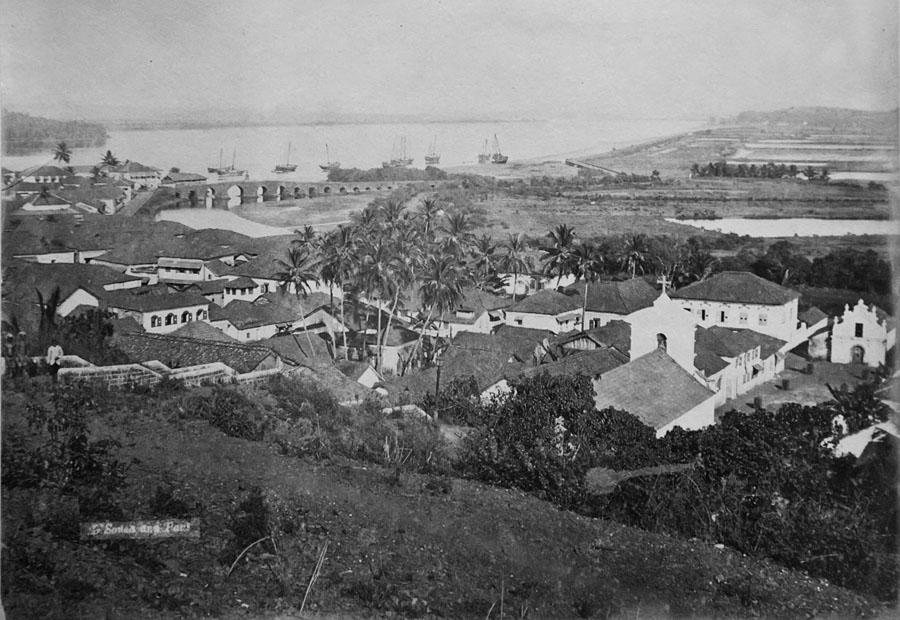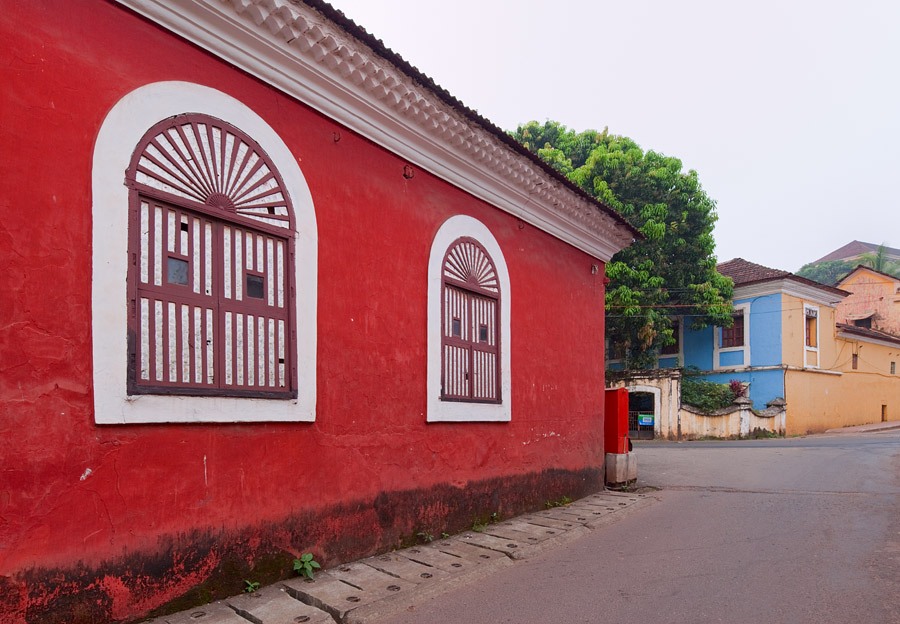No visual symbol distinguishes Goa from the rest of India quite as tellingly as its capital city of Panjim, perched on the banks of River Mandovi.
Panjim attained prominence in 1827 when the Portuguese transferred their capital from Old Goa. In 1843, it was elevated to a city, awarded upgrades befitting the capital of Estado da Ìndia, and renamed Nova Goa. A description of that time cuts a smart picture: It is a very beautiful city, modern, with broad and spacious roads drawn in grid pattern (tiradas a cordel), large squares, excellent footpaths, six beautiful bridges and a fine dock. That quote and its source are found in the monograph Snapshots of Indo-Portuguese History – Part I – Pangim, by Vasco Pinho.
I was born and raised in Panjim. It remained essentially the same idyll through my young adult years. All the ingredients of a world-class town were in place beginning with its picture-postcard setting. It was clean, quiet, the pace was languid, and an old world collegial ambience prevailed. Violent crime was unheard of. It had fine educational institutions, an outstanding medical school & hospital – said to be the oldest in Asia, a superb Central Library, a clutch of cultural institutions, lovely jardims, and wide open spaces for outdoor activities. Above all, it was a pedestrian’s delight with all neighbourhoods within the ambit of a leisurely stroll.
Where in India – or even in Silicon Valley for that matter – could a young fellow sit through a music class, then go out and shoot soccer balls, then polish off a plate of bhaji-puri at the legendary Cafe Tato, then traipse across the jardim to the reading room at Central Library, and finally pedal to Miramar beach for sundown? All in the space on an afternoon, immersed in delightful surroundings, without jostling crowds and honking traffic. Panjim was our cosy nest for what the Italians call dolce far niente. This is not a tall tale of “the good old days” – I am talking Panjim of as recent as the mid-1990s.
Sad to say, since 2002 or so this exquisite city of ours – amchi Ponje – is on a downward spiral like much of Goa. Soon it will devolve into another noisy, squalid, jumbled mass of urban chaos that is characteristic of all Indian cities and towns. By and by I shall have more to say on this.
In this extended series to be run over the next several months, I will focus on remnants of Panjim‘s past. The photographs will strive to convey a sense of the city’s surviving heritage assets and its (fast-fading) character.
This first photograph was taken from the Reis Magos fort across River Mandovi.

Panjim on the River Mandovi
5D, 24-105L
The next photograph was shot late evening from the upper maintenance deck of the Doordarshan tower (notice the long shadow), looking towards Patto, Mandovi bridge, and the island of Chorão across the river. I had to obtain special permission for access to the tower. The climb up the dark, dank space was quite hairy given the heavily corroded iron railings & stairs.

A bird's eye view of Panjim
5D, 35L
By way of comparison, this is a photograph I took of an old (c. 1900) photograph from the Central Library archives. The bridge leading into Ponte de Liñhares (1632) that joins Panjim with Ribandar is seen, as are the salt pans to the right, and Chorão across the river.

Panjim circa 1900 (© Souza & Paul)
The final photograph was taken in Corte do Oiteiro (colloquially called Cortin). Houses of this type, featuring windows laced with nacre, characterize Panjim‘s old quarter.

Old house in Panjim's Cortin quarter
5D Mark II, TS-E 17L





beautiful mesmerizing!! hats off!!
Really its wonderfull job to keep goa alive and al the memories of portugues really a goog job rajan keep it up hats off to you
REALLY VERY VERY WONDERFUL I HAVE GOOD MEMORIES OF MY SCHOOL DAY IN PANJIM FROM 1971 TOO GOOD
WARM REGARDS
EDWIN
Beautiful and incredible.We hardly imagine our own beauty.
[…] Panjim our walls feature a real hole-in-the-wall where the city’s bookworms can crawl into. This […]
SuperB photos Rajan.
Hope this Goan beauty and Goan architecture is preserved forever.
God bless u for capturing this wonderful pictures.
[…] Promenade – 2. Panjim Promenade – 1. […]
[…] see: Panjim Promenade 1. […]
Brilliant!! Great job Rajan..
Comparing the 1900 and 2009 bird’s eye views of Panjim is endlessly fascinating.
Rajan u r truly amazing.Great job SENHOR. Count me as one of ur silent admirers.
I hope this is all going to end in a book which one could buy and re-read. Tremendous effort.